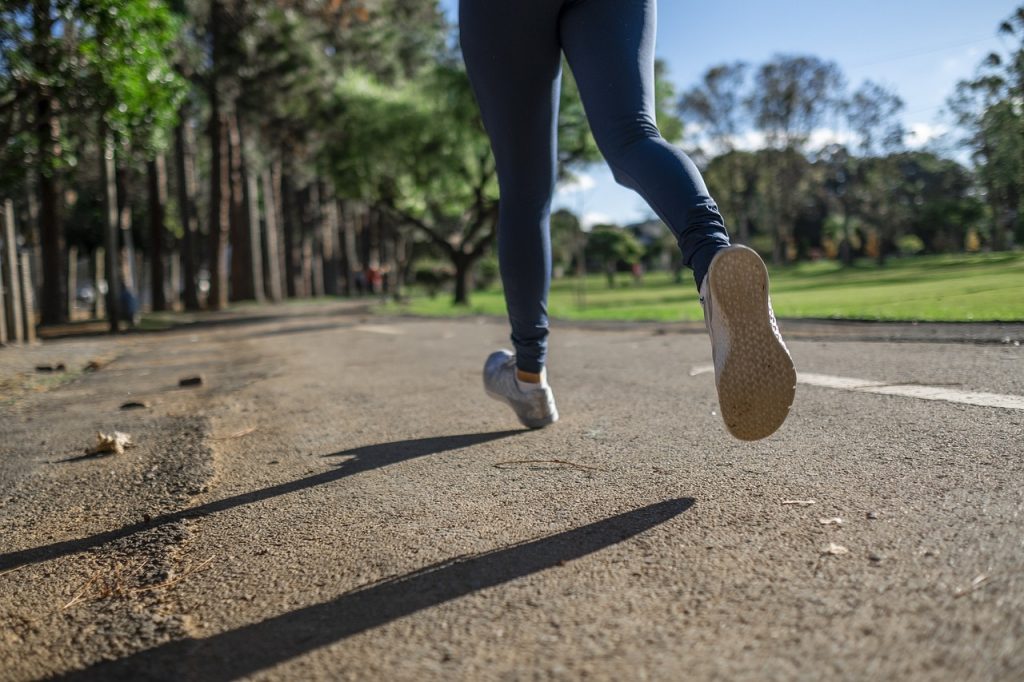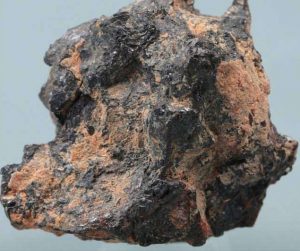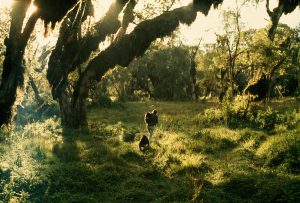
I’m a writer with a passion for fitness, martial arts, motorcycles, and classic German sports cars. Learn more about me and my work by clicking the links above and reading some articles below.


I’m a writer with a passion for fitness, martial arts, motorcycles, and classic German sports cars. Learn more about me and my work by clicking the links above and reading some articles below.

Maybe you want to exercise, but you are unmotivated or don’t know where to start. Here’s a simple challenge: begin with five minutes every day. Nearly everyone can squeeze in five minutes of exercise before work, during lunch, or after work. After all, it’s only 300 seconds.
Maybe you march in place for one minute, do bicycle sit ups for the second minute, boxing moves for the third, and so on. Maybe you walk down the road and back. Maybe yoga is your thing. If you listen to a favorite song or two while you are toning up, those five minutes will go by rather quickly.
Let’s say you start those five minutes on a Monday, and you continue those five minutes for a week. Those daily increments of 300 seconds add up to 35 minutes a week—a worthy amount of physical activity. The trick is to find a routine that you like (you may not want to include a difficult exercise such as a one-minute plank, for example).
Research shows it can take a while for new habits to form, so give yourself some grace. Still need help? One study shows that creating rewards for yourself can help when it comes sticking to a plan (mani pedi, anyone?) You could also challenge a spouse or a friend to do a five-minute exercise challenge. This will hold you accountable.
There is a good chance that five minutes will eventually turn into 10 or 15 minutes. Why? Because you will start to feel stronger, more confident, and you’ll want to do more. You’ll realize that you can make time for more than five minutes. That’s when change occurs.
Five minutes of fitness will change your life because it will mentally and physically make you feel better. Put yourself in the driver’s seat when it comes to your health, and your mind and body will benefit.

It’s hard to conceive that Porsche considered retiring the 911 model from its lineup. While the automaker nearly tried the New Coke method (retiring a classic formula and introducing a new one that wasn’t quite as popular), an American executive convinced the Germans to hold steady with 911 production. This happened back in the early 80s, and thank the car Gods for his intervention.
But let’s back up a bit. In 1978, the automaker released the first 911SC, which stands for Super Carrera. This iteration was considered a more cultivated and driveable option than the 911S, according to Leland-West. The SC had more horsepower but it also included an exhaust emission air pump, so it could be sold internationally. This addition effected its performance, but Porsche had a fix: it changed the timing of the camshafts so the SC was able to pull firmly at low RPMs. This signature feature “still graces the grunt of every Porsche on the market today.”
The SC was targeted towards both sports car enthusiasts as well as drivers seeking a sport touring package. However, Porsche fully intended to retire the 911 line as it was introducing the new front-engine, V-8 928, which was supposed to become the manufacturer’s new flagship model.
Air conditioning and power windows were made standard features on the SC by 1980, hit-or-miss extras depending on whether you liked the added luxury or lamented the added weight, which led to a slight loss in power. Regardless, the SC remained super popular and outsold the 928 by almost 50 percent.
Enter Peter Schutz. Ferry Porsche personally asked him to apply for the position of CEO of Porsche AG, and he was the first American to land the gig. The company was “experiencing a difficult period” when he took the position, the automaker acknowledges, and the year before, Porsche recorded its first-ever losses. Schutz had some expectations to meet, and he delivered. Just three weeks on the job, he reversed the automaker’s decision to stop 911 production. Schutz wrote about the move in a 2013 issue of Road & Track, revealing that he hadn’t even sat in a 911 before he became CEO.
One week in, Schutz observed “a sort of pervasive sadness among the staff.” That’s when he learned that employees were downtrodden when they learned the company was canceling the 911. Apparently, the board saw the model as an “outmoded concept.” Sales had dropped, quality had dropped, and the price was high, according to dealers.
“The 911 was too difficult to control, blah, blah, blah,” Schutz wrote. But he wasn’t convinced it was the right decision to retire the model. Calling it “temperamental at times,” he also said it “had character,” which is why people loved it.
He added: “Those with training, with skill, who could catch it in a slide and bring it back into line—the 911 was king. It was the only car worth driving because it was the only car that would push back.”
In Germany, decisions are rarely reversed. Yet, Schutz clearly remembered the day he changed the Germans’ minds. He went to lead engineer Helmuth Bott’s office and saw a wall chart illustrating the development of the 911, 928, and 944. The line stopped at the 911, while it continued for the latter two models. Schutz took a marker and extended the 911 line not only across the page but also onto the wall and out the door. When he returned to the office, Bott was smiling. Their understanding, and love, of the 911, was mutual.
It was a smart move. The 911 is considered one of the world’s most iconic sports cars and has been for more than 50 years. It’s the company’s heart and soul.
As for the 911SC, 59,000 units were sold, which is somewhat impressive considering it was intended to be the last of the 911s. It was later improved with the introduction of the 911 3.2 Carrera.

Pigeons, though often belittled by many, can actually solve problems in a manner like that of artificial intelligence! Thanks to a new study supported by the National Science Foundation and the National Institutes of Health, there’s a whole new meaning to the term “bird brains.”
“We celebrate how smart we are that we designed artificial intelligence, at the same time we disparage pigeons as dim-witted animals,” noted lead author and professor of psychology Brandon Turner from Ohio State University. “But the learning principles that guide the behaviors of these AI machines are pretty similar to what pigeons use.”
Scientists had formerly determined that pigeons have the ability to tackle certain complicated tasks in ways that a human’s way of thinking would not be as effective. It has been speculated that pigeons use “brute force” to solve problems just like AI. Turner and a colleague from the University of Iowa created an experiment that seems to have proven that theory.
According to Turner, the mechanisms that guide pigeon learning “are remarkably similar to the same principles that guide modern machine learning and AI techniques.” He explained that nature appeared to have created an “incredibly efficient learner that has no ability to generalize or extrapolate like humans would.”
Turner and Edward Wasserman, also a professor of psychology, created four different tasks for a group of pigeons. The birds had to peck a button to choose which category a group of lines, concentric rings, and sectioned rings belonged to. The pigeons received a food pellet only if they got the right answer.
Over time, the pigeons got better at making their choices and improved their scores from 55 percent to 95 percent. Their responses also improved in the most difficult task from 55 percent to 68 percent.
It is believed the birds used associative learning, or the coupling of two phenomena. This is a somewhat simple concept. It is often considered “far too primitive and rigid to explain complex visual categorization like what we saw the pigeons do,” Turner explained.
However, when the researchers used AI to complete the same tasks, the AI model also used associative learning and error correction. Just like the pigeons appeared to use! The AI model increasingly made correct answers just like the birds.
In contrast, humans would have tried to conceive of a rule to make the job easier. However, there are no rules that would have made these types of tasks easier. Pigeons do not attempt to make up rules, Turner pointed out. Instead, they use a brute force method of trial and error as well as associative learning to get the job done. Outperforming humans and acting in a way that is like AI.
Pigeons are remarkable animals. They can be trained to return to specific locations, and are strong enough to carry small notes. They were used by soldiers during the World Wars to send messages and spy on enemy troops. Read more about these hero birds here.
And just in case you think the doves the bride and groom release at a wedding are pigeons, get the facts here. Finally, check out some weird nests built by our feathered friends.

There’s a man from Hamburg, Germany, who became “infected” with the Harley-Davidson virus when he was a teenager. Many bikers can identify with that sentiment.
The “virus” can strike when you’re young and see a motorcycle for the first time, or later in life when you finally have enough money to buy your dream bike.
For Uwe Ehinger, the sickness compelled him to search high and low—in junkyards, people’s garages, and anywhere else he could find lost motorcycles—for Harley castoffs. What others considered junk, he saw as treasure. He started collecting these “relics” and became a motorcycle archaeologist. And what did he do with these old Harley-Davidson parts that no one else wanted? He built his own bikes and custom bike shop, Ehinger Kraftrad. Then in summer 2017 he used them to make gin. And it’s not supermarket gin—it’s top-shelf liquor.
Ehinger explains on his website, www.the-archaeologist. com, “Every time I make a find of rare bikes, I wonder how to use every single part–because they deserve to be preserved. That is where the idea for ‘The Archaeologist’ emerged: preserving the spirit of the old machines in an actual spirit and make it possible to experience the taste.” Heck, yeah!
He offers three kinds of gin, lovingly named The Flathead, The Knucklehead and The Panhead. The premium dry gin contains actual engine parts from Harley-Davidsons. It is safe to drink because all of the parts are washed and sealed in a tin alloy. The gin contains camshafts from a 1939 Flathead, screw-nuts from a 1947 Knucklehead, and rocker arms from a 1962 Panhead. Even the labels have a vintage feel—they were printed on a 1931 Heidelberg Tiegel printing press. The bottles themselves are wrapped in paper that describes the origin of the bike parts inside.
Ehinger’s obsession has taken him all the way to South America and South Korea to find motorcycles that need saving. He has been hunting them down for decades. In the 1980s, he scored several 1939 Flatheads while combing through a garage that stored decommissioned bikes formerly used by the Mexican military. While traveling through Santiago, Chile, he found a rare, blue 1947 HD FL. The coolest part? It was previously owned by a German pharmacist who used it to deliver his prescriptions. In South Korea, he found a meticulously organized motorcycle graveyard filled with unwanted bikes, including a 1962 Panhead.
The price of the gin is a little steep. Bottles cost between $1,000 and $1,280. The gin is so popular, the limited run sold out online within hours of its release. If you’re still interested, the company is taking advance orders for the next edition.
(Originally published in MotorSpirit magazine)

Jeans are always in fashion, and vintage ones can be worth a lot of money. A pair of 125-year-old Levi Strauss & Co. blue jeans recently sold at auction in Maine for nearly $100,000 US.
An anonymous bidder from Southeast Asia bought the pants, which failed to sell at auction in 2016. The sale was nearly a record for old Levi’s. What type of person would spend that kind of money on fashion?
“It’s somebody who loves old Levi’s,” Daniel Buck Soules from Daniel Buck Auctions told the AP. Buck worked at public television’s Antiques Roadshow for 11 years.
Because it was a private sale, Soules was unable to reveal the exact price of the jeans or where the buyer lives. A representative for the buyer travelled to Maine to inspect the merchandise before purchasing them on May 15.
The jeans have a somewhat interesting story attached to them. Storekeeper Solomon Warner from the Arizona Territory purchased them in 1893. Described as a “colourful character,” Warner was shot by Apache Indians in 1870. He was one of the first Americans to sell dry goods in Tucson.
A mill in New Hampshire produced the denim, and Levi’s in San Francisco, Calif., manufactured the jeans, which are button fly. During that time, jeans only had a single back pocket. Men wore suspenders, so there are no belt loops on the jeans.
Warner was apparently a big guy. The jeans are size 44 waist with a 36-inch inseam. He only wore them a few times because he got sick, said Soules. They were stored for decades in a trunk and were in extremely good condition prior to the sale.
Soules initially put the jeans up for auction two years ago, but it was cancelled due to a computer issue that caused problems with online bidding. The seller decided to do a private sale instead.
Rare jeans are popular at auction, according to Soules. A Japanese collector bought a pair of 501 jeans from the 1880s for $60,000. Still another pair from 1888 sold for six figures.
The positive public relations related to the sale must be a welcome relief to the company. Earlier in May, the environmental activist group Stand.earth released the critical report “Too Deadly To Wear: Levi’s Pollution, the Booming Fashion Industry and Its Role in Deaths from Air Pollution and Climate Change.” The report claims Levi’s plants pollute as much as 1.1 million cars annually.
“The fashion industry is the source of approximately 8 percent of global climate pollution. If it were a nation, it would be the fourth largest climate polluter on Earth,” said Todd Paglia, executive director of Stand.earth in a statement. “Yet major brands like Levi’s continue to drag their feet on comprehensive climate action, ignoring the massive amount of pollution hiding in their supply chain.”
A Levi Strauss spokesperson responded in a statement:
“Levi Strauss & Co. has a long-standing commitment to taking action on climate change. In line with our history of advocacy, we’ve been vocal in our support for the Paris Climate Agreement and in urging world leaders to protect our environment. We’re committed to reducing our emissions by 25 percent and using 20 percent renewable energy by 2020 – and we are on track to exceeding this goal. We also partner with organizations such as the National Resources Defense Council and the International Finance Corporation on innovative and scalable approaches to reduce factory emissions across the global supply chain. In September 2017, we joined more than 300 global companies in committing to set science-based targets to reduce emissions across our entire supply chain.”

A company in France is providing wi-fi through lighting. Philips Lighting has introduced Light Fidelity (LiFi), which uses light waves to deliver a broadband internet connection. Philips is the first lighting company in the world to offer LiFi through its current lineup of products.
“LiFi has enormous potential for today’s digital age and as the world’s leading lighting company we are proud to pioneer new and innovative services for our customers,” said Olivia Qiu, Chief Innovation Officer, Philips Lighting, in a press release.
“While radio frequencies are becoming congested, the visible light spectrum is an untapped resource with a large bandwidth suitable for the stable simultaneous connection of a vast array of IOT devices. Being a lighting company, we ensure that our customers benefit from the finest quality energy efficient light along with state-of-the-art connectivity,” she added.
LiFi uses light waves instead of radio waves to transmit data. Philips Lighting’s broadband connection provides a speed of 30 Mb per second (Mb/s) while ensuring the integrity of the lighting itself. LiFi users can stream multiple HD quality videos at once while participating in video calls.
French real estate company Icade is the first to incorporate LiFi in its offices in La Devense. “LiFi has the potential to be a real game-changer in offices. As the leader in our market we wanted to explore the possibilities of this technology for existing and future clients,” said Emmanuelle Baboulin, head of the Commercial Property Investment Division at Icade.
Why would a business choose LiFi over wi-fi? In some spots, such as hospitals, radio frequencies interfere with equipment. Wi-fi signals may also be sluggish underground, so LiFi is a good alternative. In addition, LiFi provides more security than wi-fi as it cannot pass through solid walls, making it beneficial for the government or financial institutions.
According to Philips Lighting, each of their luminaires contain built-in modems that modulate the light “at speeds imperceptible to the human eye.” Users access the LiFi through a USB key/dongle inserted into their laptops or tablets, which transmits data via an infrared link. The connection is highly secure, and Philips claims that it has “10,000 times the spectrum of WiFi.”
 Many people enjoy signing their names on things to leave their mark. Nearly 100 years ago, Ivan Pavlov autographed a piece of steak using an electrical knife. That chunk of beef and other unusual items can be seen, basking in formaldehyde, at the Yale School of Medicine.
Many people enjoy signing their names on things to leave their mark. Nearly 100 years ago, Ivan Pavlov autographed a piece of steak using an electrical knife. That chunk of beef and other unusual items can be seen, basking in formaldehyde, at the Yale School of Medicine.
The Russian physiologist and Nobel prize winner, known for his study of dogs and the concept of the conditioned reflex, signed the piece of meat after observing the father of neurosurgery, Harvey Cushing, perform an operation in the 1920s.
Cushing was demonstrating the use of a new instrument, a Bovie knife, which he used to cauterize and cut brain tissue to reduce bleeding (a major cause of death at that time).
“At the end of the operation, he invited Pavlov to try it out for himself because that’s what guys do. They share toys,” Terry Dagradi, photographer & Cushing Center curator told Ripley’s. “You got a new instrument or a new shop tool and you’ve got to share it.”
Pavlov played with the electrical knife for a little bit, used it to sign the steak, and then gave it back to the surgeon.
“Of course, Cushing as a collector put it in a jar,” Dagradi explained.
Cushing’s obsession with preservation and documentation is why people can still see Pavlov’s steak today.
Cushing started collecting brains, tumors, and other items related to his work in 1902. The Cushing Center at Yale University in New Haven, Conn., contains thousands of neurological case studies and over 15,000 photographic negatives from the late 1800s to 1936.
Retaining the specimens and tumors helped Cushing understand disease and the structure of the brain. He often asked patients to donate their brains so he could learn more about them and the pathology that affected them.
Eventually, the brains in the pathology department were taking up too much space and were nearly thrown out. Fortunately, someone decided to store them in a subbasement at the Yale Medical School where they remained for several years.
In the early 1990s, medical students rediscovered them and it became a rite of passage to take a look at them. The specimens were eventually brought out into the open for people to look at in what became the Cushing Center.
“One of the things that’s quite beautiful about the collection is the glass jars that the specimens are in,” Dagradi noted. “They were probably mostly made in the ‘20s and so they’re very high-quality lead crystal. Today I think what they use for these kind of specimen collections are Tupperware, believe it or not.”
Visitors are fascinated by the jars, which contain different colored solutions.
“We often get asked why the jars are all these different shades of gold and brown and sometimes a little green, and it’s because of the way the specimens are still interacting with the solution,” Dagradi noted. “That might have to do with the type of tumors or the interactions of the specimens themselves.”
How long are the brains and tumors expected to stay intact in their little bottles of formaldehyde?
“Some of these brains are already 100 years old. He started preserving tumors and brains around 1902. I’m hoping with us watching them and now that they’re in a much safer environment for preservation, indefinitely,” she explained.
Another remarkable thing in the collection are the eerie photographs of Cushing’s patients.
“Often they’re pretty stark portraits or closeups of scars or that sort of thing. But they also have a sort of poignancy and connection to the fact that the specimens, the brains, used to be in people—the people he tried so hard to save. They are also just a beautiful sort of accidental archive that really enriches the collection itself,” Dagradi pointed out.
One thing the center features that’s not related to Cushing is a 3D model of the skull of one of the first patients to survive a traumatic brain injury: Phineas Gage. He was a railroad construction foreman who survived after an iron rod went through his skull in 1848.
“It went through his left frontal lobe. This gentle, well-mannered, logical young foreman turned into a rowdy, swearing, bawdy drunk. He’s sort of ground zero of traumatic brain injury science,” Dagradi said.
The model and an accompanying book is used as an educational tool for New Haven school children that teaches them the connection between neurosurgery and science.
Cushing was also a collector of rare books, many of which are rotated for visitors to see. The current exhibition is on Alchemy. Previous themes have included anatomy and mathematics. Cushing collected tomes by Nicolaus Copernicus, Issac Newton and Galileo as well as beautiful Persian books.
The Cushing Center is open to public most days from 10 a.m. to 8 p.m. Weekly tours are also available.
(Originally published on Ripley’s Believe it or Not!)
 Researchers found what is known as the Hypatia stone in Egypt in 2013. They determined that the small pebble is extraterrestrial in origin. What’s fascinating is that the stone contains micro-mineral compounds that aren’t known to occur anywhere on Earth, in other meteorites, or anywhere in the solar system, reports Science Alert.
Researchers found what is known as the Hypatia stone in Egypt in 2013. They determined that the small pebble is extraterrestrial in origin. What’s fascinating is that the stone contains micro-mineral compounds that aren’t known to occur anywhere on Earth, in other meteorites, or anywhere in the solar system, reports Science Alert.
The stone was named after scientist Hypatia of Alexandria. Some think the diamond-filled pebble might be part of a comet nucleus, while others believe it could have formed from a cold molecular cloud.
According to researchers from the University of Johannesburg, the stone’s lack of silicate matter makes it unique among the interplanetary material that has made its way to Earth. In addition, it contains minerals that appear to predate the sun.
Prof. Jan Kramers, lead researcher of the study, “Extra-terrestrial Hypatia stone rattles solar system status quo,” has compared the internal structure of the stone to that of a fruitcake that breaks apart after falling onto the floor into some flour:
“We can think of the badly mixed dough of a fruitcake representing the bulk of the Hypatia pebble, what we called two mixed ‘matrices’ in geology terms. The glace cherries and nuts in the cake represent the mineral grains found in Hypatia ‘inclusions’. And the flour dusting the cracks of the fallen cake represent the ‘secondary materials’ we found in the fractures in Hypatia, which are from Earth.”
The Hypatia stone is just one tiny piece from the original “fruitcake,” which is believed to be several meters in size. The stone has a lot of carbon and small amounts of silicon, which is different from non-metallic meteorites called chondrites that are similar to Earth.
Kramers noted: “Even more unusual, the matrix contains a high amount of very specific carbon compounds, called polyaromatic hydrocarbons, or PAH, a major component of interstellar dust, which existed even before our solar system was formed. Interstellar dust is also found in comets and meteorites that have not been heated up for a prolonged period in their history.”
What’s also intriguing is the PAH in the pebble transformed into tiny diamonds, likely upon impact with Earth. The diamonds enabled the stone to survive to its present form.
The researchers also discovered aluminum in the mineral grains of Hypatia. Researcher Georgy Belyanin explained: “This occurrence is extremely rare on Earth and the rest of our solar system, as far as is known in science. We also found silver iodine phosphide and moissanite (silicon carbide) grains, again in highly unexpected forms. The grains are the first documented to be found in situ (as is) without having to first dissolve the surrounding rock with acid. There are also grains of a compound consisting of mainly nickel and phosphorus, with very little iron; a mineral composition never observed before on Earth or in meteorites.”
While Hypatia’s compounds likely predate the sun, researchers believe the pebble itself was formed after the sun.
Kramers noted:
“Hypatia was formed in a cold environment, probably at temperatures below that of liquid nitrogen on Earth (-196 Celsius). In our solar system, it would have been way further out than the asteroid belt between Mars and Jupiter, where most meteorites come from.
“Comets come mainly from the Kuiper Belt, beyond the orbit of Neptune and about 40 times as far away from the sun as we are. Some come from the Oort Cloud, even further out.
“We know very little about the chemical compositions of space objects out there. So our next question will dig further into where Hypatia came from.”

The coldest place on earth is experiencing near-record low temperatures that are making life brutal for many residents. Earlier this week, people in the Russian region of Yakutia endured temperature drops of minus 67 degrees Celsius (minus 88.6 degrees Fahrenheit) in certain spots.
The region is known for its severe and extreme climate, so the nearly 1 million people who live there are used to harsh weather conditions. As such, the cold temperatures didn’t even make local media headlines.
Located about 3,300 miles east of Moscow, Yakutia was so cold that school was cancelled. This is a rarity because it’s common for kids to attend classes when temps are minus 40 degrees. However, temperatures reached such dangerous levels that police mandated parents keep their children home, reported Time.
Two men froze to death after their car broke down and they attempted to seek shelter and help at a nearby farm. Three of their companions survived because they had on warmer clothing.
The town of Oymyakon is one of the earth’s coldest inhabited places, and a television station showed the mercury falling so low it couldn’t measure the accurate temperature on the thermometer (which only goes to minus 50). The town experienced an all-time low in 2013 with minus 71 degrees Celsius (minus 98 Fahrenheit).
Photos from the area have been making the rounds in the news and social media. Some brave Chinese students were pictured taking a dip in a thermal spring, while photos of women with frozen eyelashes also dominated news feeds.
In winter, Yakutians subside on primarily a meat-based diet, including items such as raw fish, reindeer meat, horse liver, and ice cubes of horse blood. Most homes use outhouses because the ground is too frozen to accommodate pipes. Those who work outside do so in 20-minute shifts. Homes and businesses use central heating and have backup power generators in order to stay warm.

Dian Fossey in the wild with Mountain Gorillas. (photo credit: ROBERT I.M. CAMPBELL)
Dian Fossey produced unparalleled research about mountain gorillas during the 18 years she spent studying them in the mountain forests of Rwanda. It’s been 32 years since her brutal murder, and National Geographic is detailing the life and legacy of the legendary primatologist in a three-part miniseries airing in December.
“Dian Fossey: Secrets in The Mist” includes Fossey’s observations and writings and demonstrates how her love for gorillas prompted her to devote her life to their preservation. Her drive to protect them likely caused her untimely death in 1985. Yet, there are still so many questions about her murder.
“Secrets in The Mist” delves into Fossey’s death and the conviction of Wayne McGuire, a doctoral student who worked with Fossey in Rwanda. Following her murder, Maguire returned to the United States where there was no extradition agreement between the two countries. He was found guilty in absentia by Rwanda courts.

Dian Fossey takes two gorillas into the forest for observation. (photo credit: ROBERT I.M. CAMPBELL)
McGuire has long maintained his innocence, and many with intimate knowledge of Fossey’s fate are skeptical about his role in the crime. McGuire gives a rare interview to National Geographic, prompting even more questions about his role in her murder. Producers were also given access to objects from the scene of the crime as well as Fossey’s personal affects.
Ironically, Fossey, who was 52 when she passed away, mused about life and death in the final entry of her journal. She wrote: “When you realize the value of all life, you dwell less on what is past and concentrate more on the preservation of the future.”
Sigourney Weaver, who portrayed Fossey in the 1988 Academy Award-nominated film “Gorillas in the Mist,” collaborated on the miniseries. Director, producer, and writer James Marsh (“Man on a Wire,” “Theory of Everything”) is executive producer.
“Dian Fossey: Secrets in the Mist” airs Wednesday, Dec. 6 at 9/8 central on National Geographic.